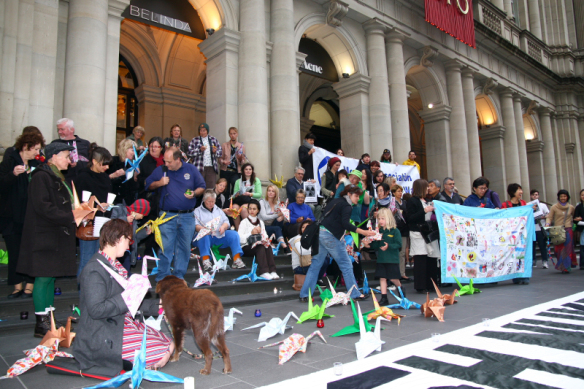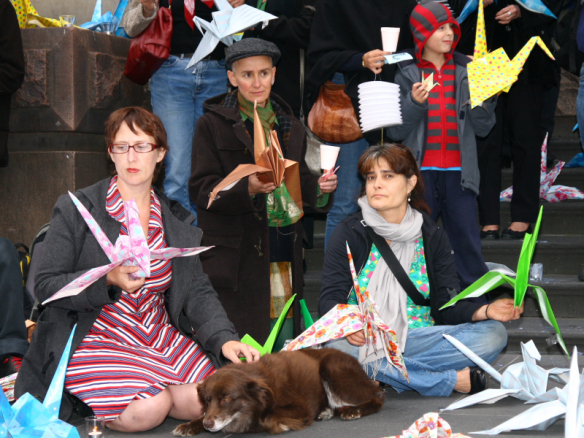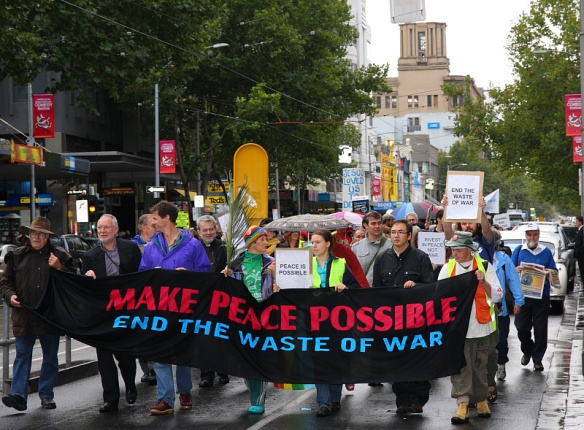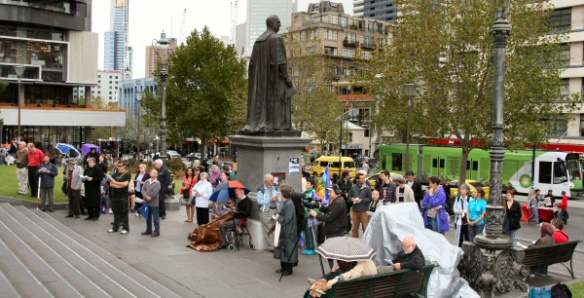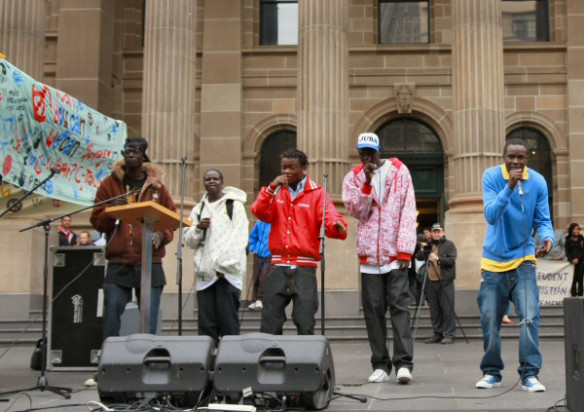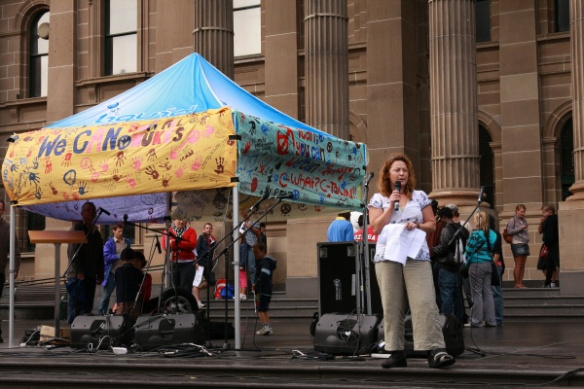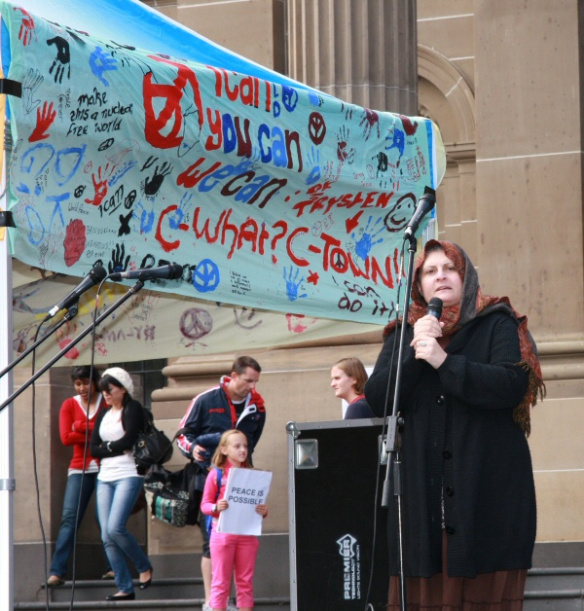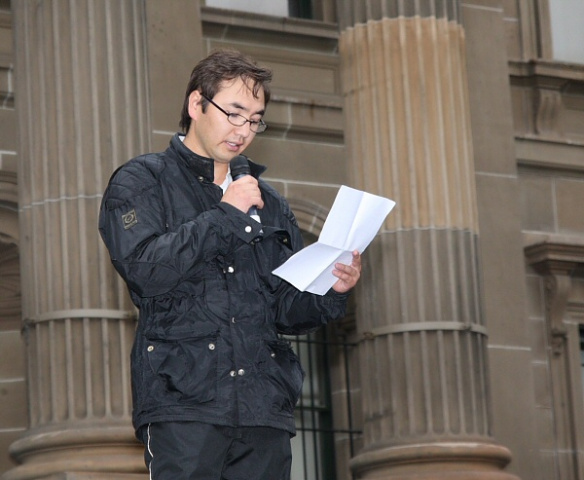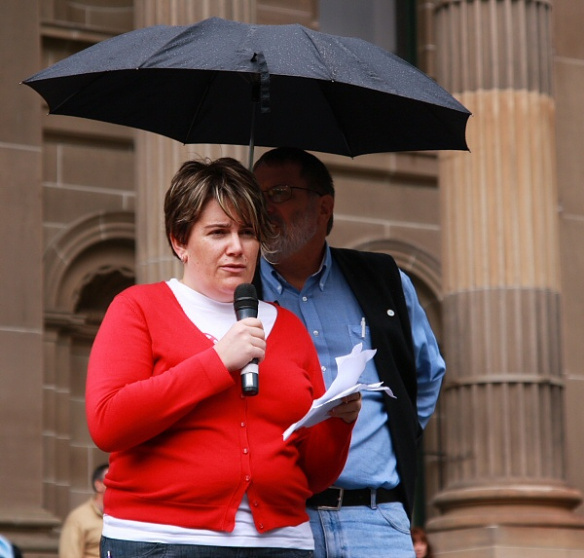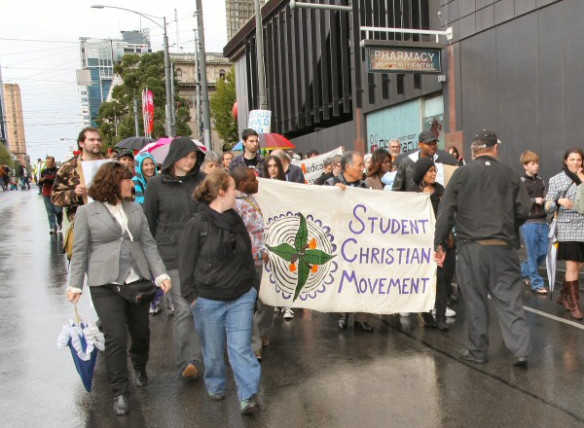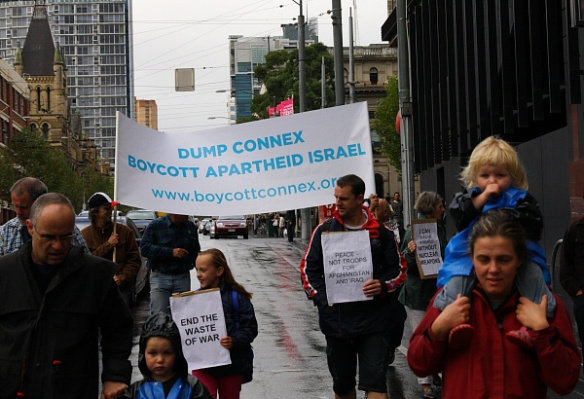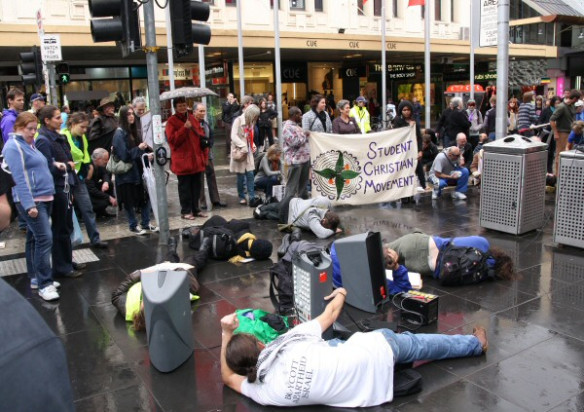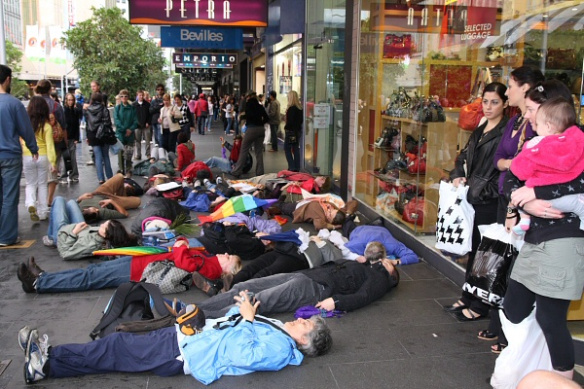To mark the 10th anniversary of the war in Afghanistan, Renegade Activists prepared a leaflet setting out some of the uses to which $21.3 billion could have been put, this being the sum of increased military spending over the last ten years compared with 2001 levels. A lolly was attached to each “as a taste of what you could have been enjoying”: it was calculated that $21.3 billion would provide “19 712 lollies for every man, woman and child in Australia”.
More seriously, people attending a vigil in the City Square were asked to consider how this sum could have been better spent – or wasted, if they preferred – while two peace activists, Simon Moyle and Jessica Morrison, took turns reading out the names of Australian servicemen and some of the thousands of Afghan civilians killed in the war. There was also an attempt to drop a banner from the balcony of the adjacent hotel, partially thwarted by security guards but still making its point.
Footage from the event, including some of the responses, can be seen on EngageMedia:
.
Attendance was not large, with the rain not helping, but a good many leaflets were distributed. Among those who did attend were representatives of MAPW Australia, and Greens federal MP Adam Bandt, who also addressed the gathering.
See also Australian Anti-Bases Campaign Coalition
Here is part of the text of the leaflet:
The Waste of War
During the past ten years successive Australian governments have invested in a major expansion of Australia’a offensive military capacity and engaged in two destructive wars, all at an estimated cost of $21.3 billion in increased spending above 2001 levels (Age, 10/9/2011). The results of this have been disastrous, with 29 Australian servicemen losing their lives alongside at least 137 000 Iraqi and Afghani civilians. Millions of refugees have been forced to flee both countries, and despite all the talk of “war on terror” car bombings and terrorist-style attacks on civilians have increased (Guardian, 14/9/2011). Although the waste and scams involved in the government’s insulation scheme were deplorable they pale into insignificance alongside those of the military. Investment in the Collins class submarines, most of which cannot even leave port, has been over $6 billion since 1989 (Australian, 15/9/2011) whilst projected spending on new NH-90 helicopters will top $3 billion despite German Army reports showing they have major defects (Sydney Morning Herald, 2/3/2010).
Spent Properly $23.1 billion could have bought
15712 new school buildings
3 234 133 fully installed solar power systems
6 999 671 cataract operations
1 521 428 571 clean water filter jars for Cambodian villagers
88 750 000 000 meals for the Horn of AfricaImagine what further cuts to 2001 military spending levels could have also paid for?









